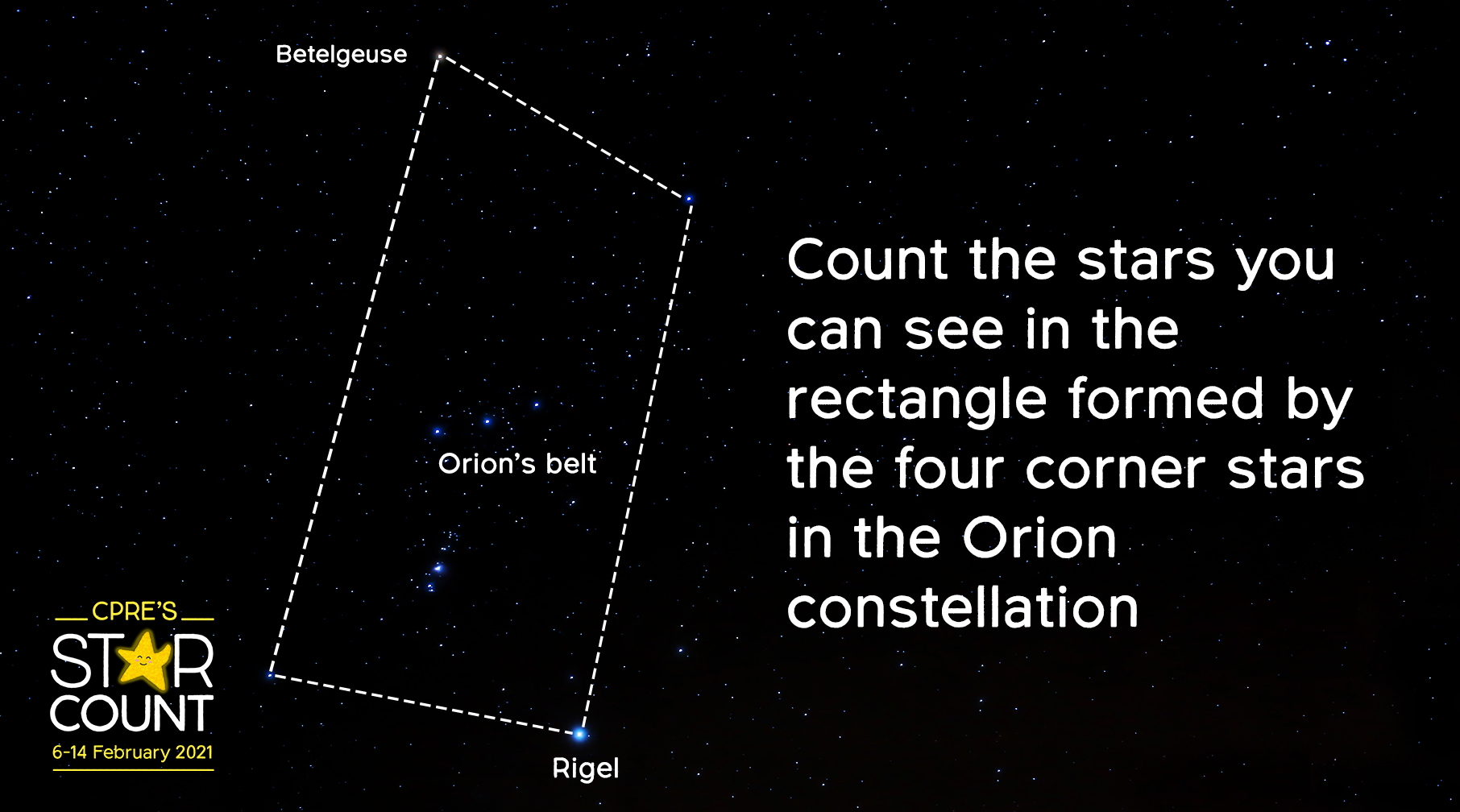For a romantic night out during the pandemic, consider laying out a picnic blanket in a park to count the stars. As an added bonus, your little date could help see if covid-19 lockdowns have impacted light pollution.
The cute suggestion comes from the 14th annual “star count” campaign by the British charity CPRE (the countryside charity, formerly known as the Campaign to Protect Rural England) and the British Astronomical Association’s Commission for Dark Skies. The organisations are calling for people across England to document how many stars they can see within the constellation of Orion from various locations across the country, and logging their observations between now and Valentines Day. CPRE says the visibility of 10 or fewer stars “indicates severe light pollution.”

CPRE will use the data to map out England’s starriest locations, and also compare participants’ findings with those from last year’s survey to determine the whether or not covid-19 lockdowns have increased the visibility of stars due to decreased industrial and commercial activity. Similar citizen science campaigns have been held by the International Dark Sky Association and Australia’s University of Melbourne.
CPRE’s 2020 star count — held just a month before pandemic restrictions began — revealed that 61% of participants lived with severe light pollution. And the problem goes far beyond England; data from the World Atlas of Artificial Night Sky Brightness shows that more than 80% of people worldwide, including 99% of those in the U.S. and Europe, reside in areas where the Milky Way is virtually invisible due to excess light. The organisation wants to use citizen scientists’ findings to advocate for solutions to light pollution.
“By taking part in Star Count, people will be helping us to lobby the government for more protection of this too often overlooked, but vital, part of our countryside,” Crispin Truman, chief executive of CPRE, said in a statement.
Let’s hope CPRE’s lobbying for the right to darkness doesn’t let other important issues fall by the wayside. In the past, the organisation has caught heat for opposing affordable housing construction in the English countryside. Fortunately, there are just, non-NIMBY ways to limit light pollution, including cracking down on unnecessary light use by businesses and deploying lighting fixtures with a more limited wattage.
If done right, actions to preserve darkness can be important beyond simply improving stargazing. Light pollution can be — as the term suggests — dangerous. Excess brightness can threaten plants and animals that thrive in dark conditions, and can also screw up human beings’ biochemistry. It’s even been linked to pregnancy complications and reduced birth weights, according to research published just last month. Much of the light used globally is also created by the fossil-powered energy grid, meaning overly bright regions can indicate that polluting energy is being used unnecessarily.
